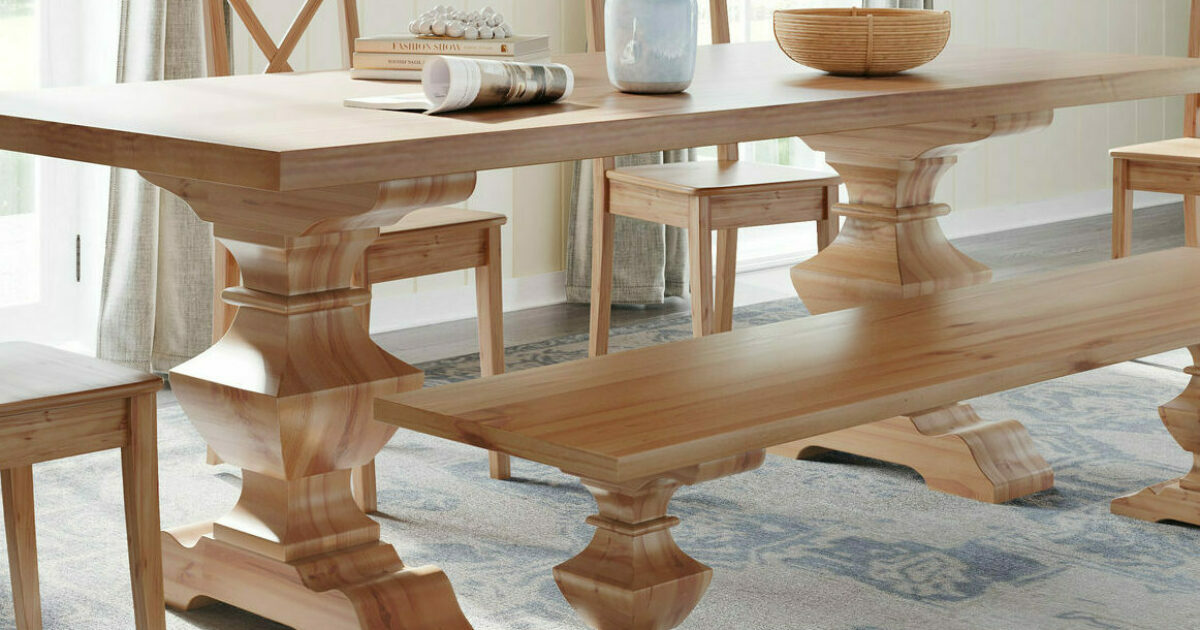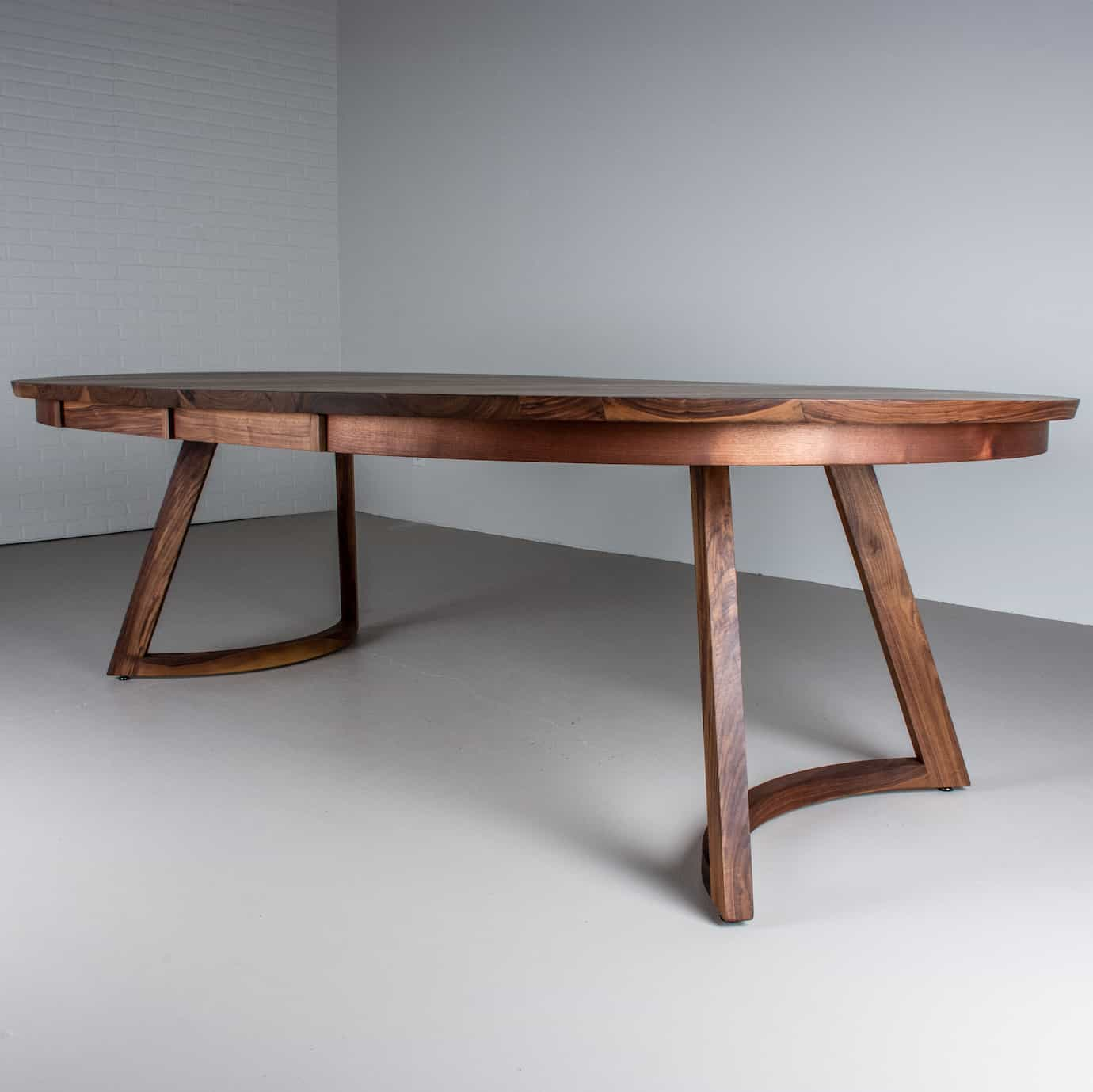Discover Timeless Appeal in Handcrafted Dining Table Legs Wood Selections
Discover Timeless Appeal in Handcrafted Dining Table Legs Wood Selections
Blog Article
Secret Factors to Remember for Table Legs Wood Choices
When selecting wood for dining table legs, numerous important factors warrant mindful consideration to make certain both performance and aesthetic allure. The option of wood kind, defined by its resilience and one-of-a-kind grain patterns, plays a critical role in the general design and durability of the item. Furthermore, one have to contemplate upkeep demands and the ecological implications of sourcing products. As these aspects link, they considerably affect the last end result of your table. Nonetheless, comprehending the subtleties of each factor can be complicated, resulting in vital decisions that warrant additional expedition.
Timber Kind and Features
When choosing timber for eating table legs, it is vital to comprehend the special features of numerous timber kinds. Various timbers use distinct advantages and negative aspects, affecting both the sturdiness and visual charm of the completed item.
Hardwoods, such as oak, cherry, and maple, are typically favored for their strength and resistance to wear. Oak, understood for its outstanding durability, also features a prominent grain that can include personality to the table. Maple uses a smooth surface and is less vulnerable to warping, making it a trusted option for useful furnishings. Cherry timber, with its abundant color that strengthens gradually, gives a glamorous look but might require even more upkeep to avoid scratches.
On the various other hand, softwoods like ache and fir are a lot more inexpensive and simpler to collaborate with, yet they are less long lasting than woods. Pine is lightweight and features a cozy, rustic look, making it a preferred selection for casual eating settings. It is much more susceptible to scrapes and dents.
Comprehending these qualities will certainly assist in making an educated decision to ensure the legs of the table fulfill both practical and visual requirements.
Grain Patterns and Looks
The wood's grain is not simply a visual feature; it imparts a distinct individuality and charm to each item. Different timber varieties show distinct grain patterns, varying from the straight lines of maple to the intricate swirls of oak and the striking figure of walnut.
Additionally, the positioning and scale of the grain can affect the perceived size and beauty of the table. As an example, larger, more noticable grains might provide a vibrant, significant impact, while finer, subtler grains can produce an improved, underrated appearance. Additionally, the ending up procedure can even more enhance these patterns, emphasizing the natural charm of the wood and drawing out rich colors.
Ultimately, the choice of grain pattern ought to balance with other style aspects, such as the tabletop and bordering furnishings, ensuring a cohesive aesthetic that raises the dining experience. Thoughtful option of timber grain not only contributes to the table's appeal yet likewise shows the proprietor's taste and style.
Resilience and Toughness
The durability and toughness of dining table legs are critical considerations for making sure longevity and security in any dining room. Choosing the right wood is essential, as different varieties display varying levels of strength.

Eventually, buying high-quality timber and robust building approaches will certainly yield an eating table that stands the examination of time, while providing a dependable structure for many meals shared amongst friends and family. Focusing on sturdiness and stamina makes certain that your table continues to be functional and cosmetically pleasing for many years to find.
Maintenance and Care
Correct upkeep and treatment are crucial for protecting the toughness and toughness of table legs made from wood. Routine cleaning is crucial; making use of a soft, moist fabric ensures that dirt and debris do not accumulate, which can result in scrapes and dullness. It is recommended to stay clear of extreme chemicals or abrasive products that can damage the coating.
Additionally, using an ideal wood gloss or wax periodically can help maintain the sheen and shield the wood from wetness and spills. It is essential to adhere to the supplier's recommendations concerning the kind of product to utilize, as specific coatings may react adversely to details chemicals.
Moisture and temperature level variations can additionally impact wood table legs, triggering them to warp or split. It's best to put the table far from direct sunlight and warm resources. If the table legs have any type of scrapes or dents, resolving these promptly can avoid more damages.
Last but not least, occasionally examining the joints and screws for rigidity is essential to keep architectural integrity (Dining Table Legs Wood). By adhering to these maintenance methods, house owners can guarantee their wood table legs remain attractive and practical for several years ahead
Ecological Considerations
When selecting wood for dining table legs, it's vital to take environmental considerations into account. The sourcing and sustainability of wood are critical in reducing environmental effect. Choosing wood from certified sources, such as those endorsed by the Woodland Stewardship Council (FSC), makes certain that the lumber is harvested properly, promoting forest conservation and biodiversity.

Moreover, regional sourcing of wood decreases transportation discharges, supporting regional economic situations while decreasing ecological influence. It is likewise a good idea to be conscious of the wood's treatment and finishing processes, as particular chemicals can be unsafe to both human wellness and the setting. By focusing on lasting timber selections, customers can add to environmental preservation while enjoying the durability and beauty of their eating table legs.
Verdict
Finally, choosing wood for dining table legs requires mindful consideration of different elements, including wood types, grain patterns, and toughness. The visual charm of unique grain patterns can boost the general design, while the toughness of woods guarantees longevity. Upkeep needs and ecological sustainability additional impact timber choices, stressing the significance of sourcing from certified or redeemed materials. An educated choice procedure inevitably adds to a aesthetically appealing and practical dining room that aligns with lasting practices.
When picking wood for dining table legs, numerous important aspects warrant careful consideration anonymous to ensure both capability and visual allure.Proper upkeep and treatment are crucial for protecting the toughness and strength of dining table legs made from wood.When choosing wood for eating table legs, it's essential to take ecological factors to consider into account. By prioritizing sustainable timber selections, customers can add to ecological conservation while delighting in the resilience and beauty of their eating site table legs.
In conclusion, selecting wood for dining table legs demands careful consideration of different factors, including timber types, grain patterns, and sturdiness. Dining Table Legs Wood.
Report this page